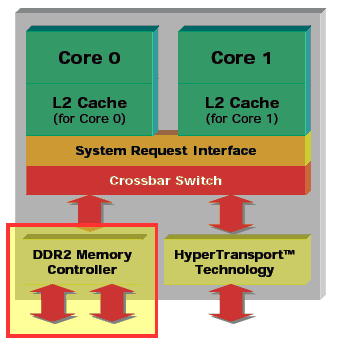AMD's Dual Core Laptops Have Arrived: Introducing the Turion 64 X2
Why Two Execution Units In "one" CPU?
The advantages of having two processor cores or execution units in one CPU are widely known by now. For those who are new to this subject, here is a brief and greatly simplified explanation of the technology.
Suppose you want to convert an audio file to the MP3 format, burn a video DVD, retrieve your e-mail, and edit a text file at the same time. As a laptop user, you will notice that switching between the individual applications takes several seconds or even longer. Sometimes, one of the applications may pause, or "hang" - in the worst case, the DVD burning program. The reason for this is that every single-core processor quickly runs out of capacity when concurrently executing many bread-and-butter applications or a few CPU-intensive jobs.
The situation is quite different in a dual-core system, where the operating system can automatically distribute individual applications and the resulting "computing load" to two cores. As a consequence, the response time of the system is improved substantially, allowing you to switch between individual programs almost without delay, as if only one application were active. Moreover, programs such as video and image processing applications that are optimized for dual-core processors often provide considerably more speed, so the image processing or rendering is completed much more quickly.
Two Cores, One L2 Cache Per Core
Turion 64 X2 block diagram
Every Turion 64 X2 CPU hosts two of these execution units, which are still produced in a 90 nm SOI process by Fab 30 in Dresden, Germany. In contrast to the Intel Core Duo processor, each execution unit of the Turion 64 X2 has its own 256 or 512 kB L2 cache. This type of architecture is referred to as split cache. Both cores access the joint memory controller over the crossbar switch. In the smart cache architecture of Intel's Core Duo processors, both cores share a joint L2 cache of 2 MB.
Get Tom's Hardware's best news and in-depth reviews, straight to your inbox.
Current page: Why Two Execution Units In "one" CPU?
Prev Page Double Power, DDR2 Memory Controller, And Variable Memory Bandwidth Next Page L2 Cache Management In Alpha Processors